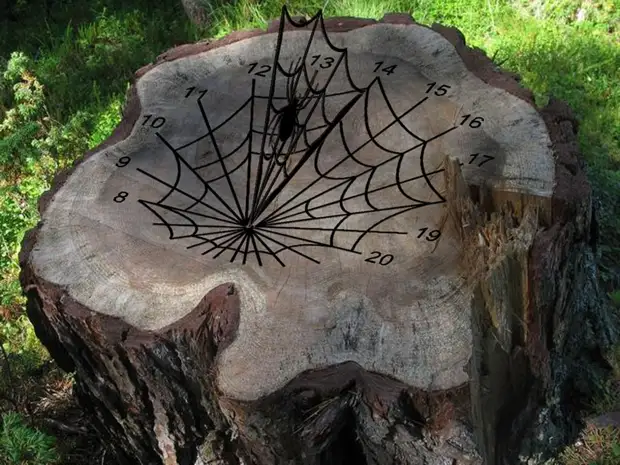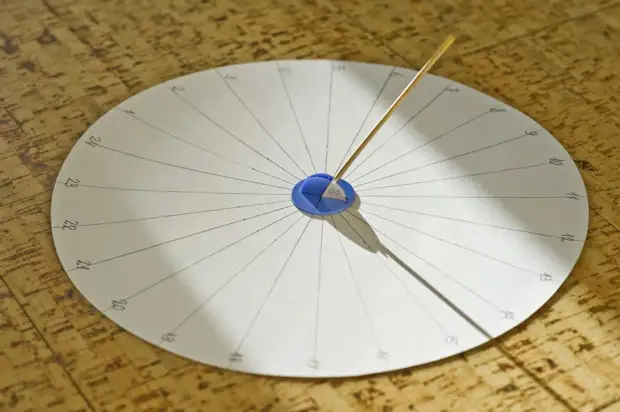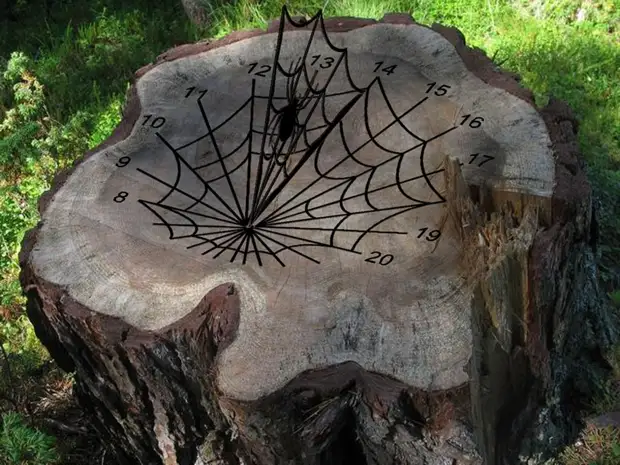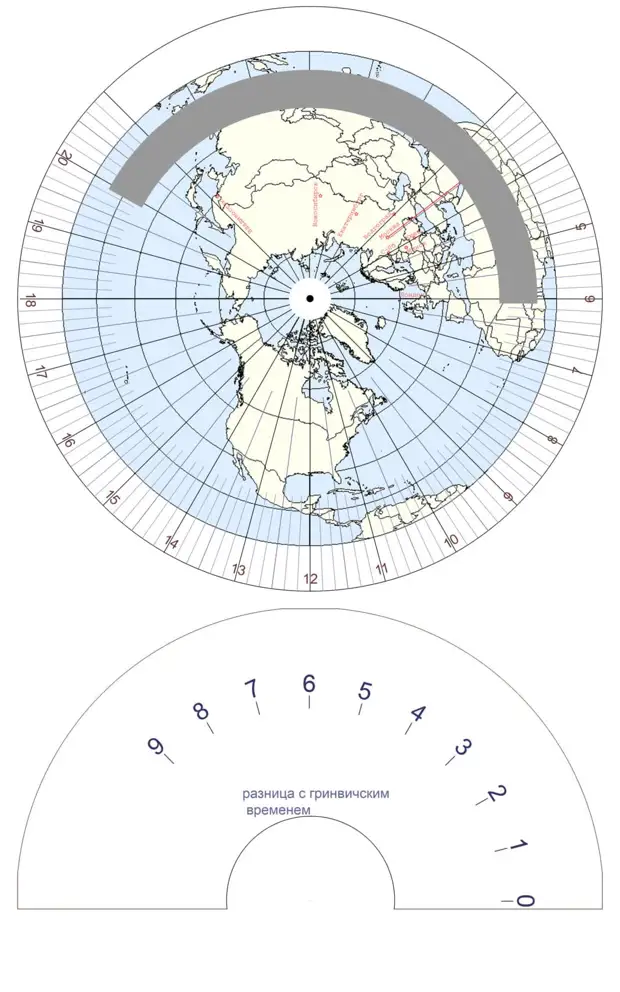
Types of sunshine

Solar time determinants are divided into three types: vertical, horizontal, equatorial. The first form is attached on the walls of the buildings, respectively, has a vertical dial aimed strictly south. The rod to specify the time is located above the center of the dial with a deviation to an angle equal to 90 degrees minus the latitude of the selected area.
The second view is located on the ground in a horizontal position. The clock rod has a view of a triangle with an angle equal to the latitude of the terrain, called gnomon. It indicates the northern direction. Such hours show the exact time all year round, except for winter and late autumn. The surface of the equatorial clock is under the inclination relative to the level of the Earth and rotate to the north. Non is a perpendicular dial of the rod located in parallel to the earth's axis. On the dial caused divisions in the same way as an ordinary arrow hour, every 15 degrees. The disadvantage of equatorial clock is that they will show information only in the period between the days of the spring and autumn equinox in the northern hemisphere, and, on the contrary, in the southern hemisphere. The advantage of this type of hours is their mobility. You can make a small design that can be moved to the desired location.
How to make a sun's hand: video
The most common horizontal and equatorial sundial, but, despite it, it is worth describing the manufacture of each of three types. Before making a design, it is necessary to determine the place to place it. It should be a territory, not a fallen buildings, trees and other objects. It is better to pre-observe the place of future hours throughout the year so that it is constantly solar. Depending on the location of the location, what type of hours is vertical, horizontal or equatorial. If the site drops many shadows from the poles, the elevation, the best option will be the manufacture of vertical solar clocks, which can be attached to the wall of the house or on a decorative column.

Equatorial sundial: manufacture
As a basis, you need to take a fane or a piece of plastic, on which divisions are applied every 15 degrees. In the center of the base is fixed with a metal rod or pin from any other strong material. Its length varies depending on the size of the watch.In order to give the correct tilt to the dial, it is installed on a special stand. To correctly calculate the angle of inclination, you need from 90 degrees to take the value of the degree of latitude of the terrain where the sundial is installed.
After the dial is installed, they must be orientable so that the gnomom indicates north. It is necessary to make it like this: for some time until the occurrence of the rod (gnomon) is fixed on the horizontal plane. The place where the shadow fall from the rod will fall, you need to mark the point, then spend a circle with a circulation. The center of this circle will be there, where the gnomon is fixed. The length of the shade at the time of observation will indicate the radius of the circle. Next you need to observe the movement of the shadow. Returning from the drawn circle, it will gradually decrease, then grow again, crossing the circle again. In the place where she crosses it for the second time, you need to put a mark and connect it with the first mark. The segment that results in, you need to divide in half. A straight line that passes through the middle of the segment of the segment and the center of the circle will indicate the direction of North-South. Next, you need to designate the dial, for which the base is placed on 24 identical segments of 15 degrees each, numeric markings.
For the correct orientation of equatorial homemake hours, the conditions must be followed:
- A part of the dial on which the numbers from 6 to 18 are indicated should be strictly horizontally.
- Part of the dial with numbers 12-24 must coincide with a certain direction of North-South.
- The dial must be tilted in such a way that the angle is the local latitude value.
How to make a sundial horizontal type
Solar clock with their own hands with a horizontal dial is made even easier than equatorial.
The base is made of solid material, you can take a fane or plastic. It can be made round or square. Gnomon is made of the same material in the form of a triangle, one angle of which should be 90 degrees, and the second - latitude of the separate terrain. The triangular arrow is attached to the base, and is installed on the ground in the right place. In order to turn the arrow to the north, oriented on the compass. To designate divisions on the dial it is necessary to start a timer, and every hour to mark the shadow from the arrow.
Making vertical sunshine

Vertical sundials are better placed on the south side. Making this type of solar clock is more complex than the first two. The dial is located in parallel to the horizon in the strict southern direction for the northern hemisphere. A little higher than the central part of the base of the time determinant, it is necessary to mark the arrow arrangement, and from this point to pull the plumb that you need to draw a line. This line will denote the time of noon. Numeric designations are located on the dial symmetrically only if the rod turns out to be in a strictly perpendicular position relative to the dial. Fasten the rod in the wall is not so simple: to begin with, you need to drill the hole in large than the gnomon, diameter. Part of the rod that will be fastened inside the wall, you need to flatten a little to prevent its turning. The mounting place is moistened, the rod is inserted there so that the bend place is exactly in the wall. The rod must be rotated so that it makes an angle of 90 degrees with the wall surface before the solution in the fastening site will freeze.

